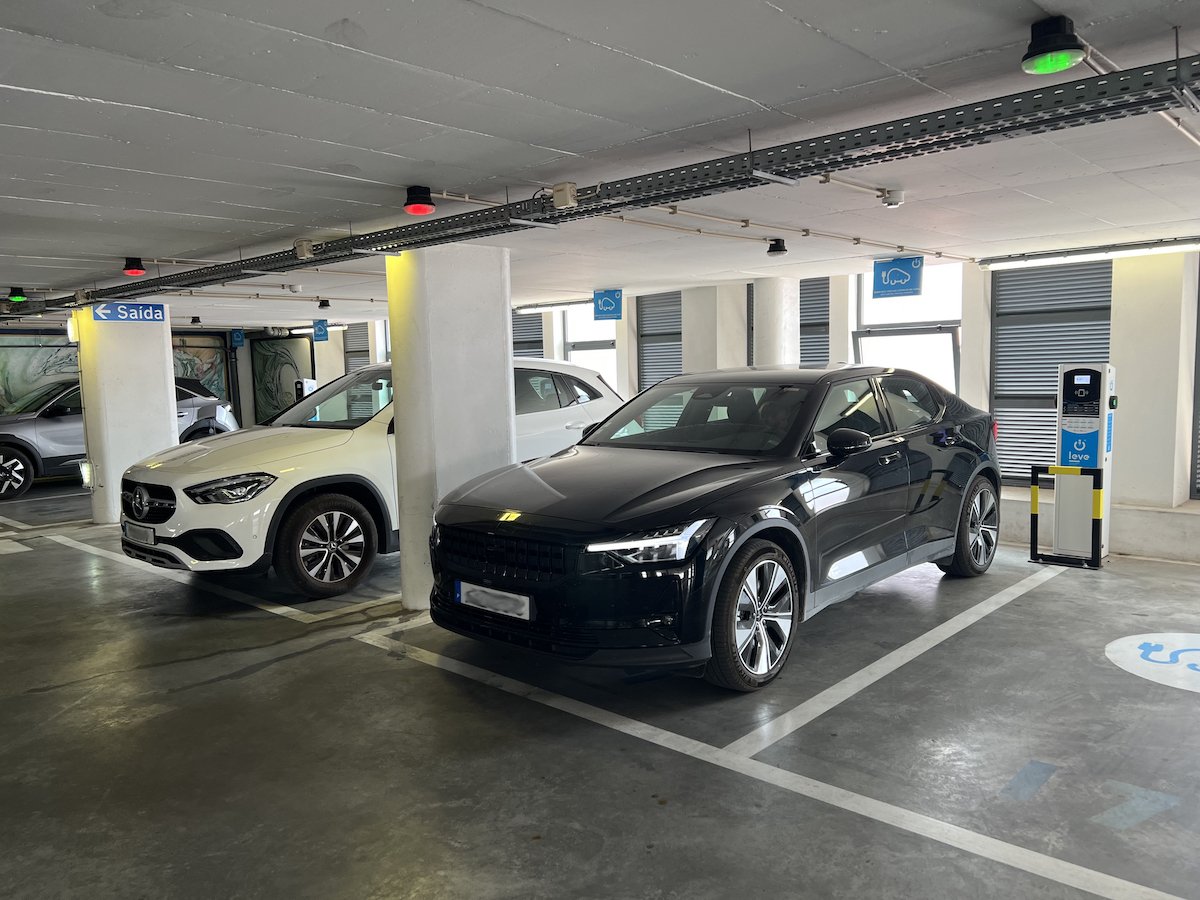EV Route Planning While Traveling Abroad
During a recent family holiday to Portugal and Spain, Sarah Booth, our COO here at Sawatch Labs, tested the waters and rented an EV for international travel. Although there were slight inconveniences and a few close calls, their trip provided valuable insights for EV route planning while traveling abroad. Read on to find how Sarah’s experience can help inform your decisions should you choose to rent an EV while in a foreign country.
Before our departure, we weighed the pros and cons of the transportation options available. Our initial plan was to rent a vehicle with an internal combustion engine (ICE) because we had no experience charging in either country, and we figured that the existing petroleum fueling infrastructure would leave more room for flexibility in our route planning.
However, we prefer driving an EV because of their lower greenhouse gas (GHG) emissions and reduced fueling costs. Our online research on the charging situation in Portugal and Spain left us with mixed reviews, but during the EVS36 conference in June, I was lucky enough to speak with a few people from Portugal who provided some good insight on charging in their country that gave us enough confidence to give it a go. After weighing our options, we decided to rent a Polestar 2.
Familiarize Yourself Before Hitting the Road
Getting behind the wheel of a new car always calls for a quick safety assessment (mirrors and seat adjusted – check!). With a rental EV, however, there are a few more tasks that you need to perform before hitting the road.
When we drive our EV back home, we rely on one-pedal driving because it offers such a smooth and efficient driving experience. Wanting to keep the smooth driving experience, I activated the setting and took my foot off the break to pull out of the lot. However, before I could put my foot on the accelerator, the car began creeping forward. After hitting the breaks and fumbling with the controls, I disabled the unwanted creep setting and we were in full one-pedal mode. I can’t foresee a reason for having both one-pedal and creep mode on concurrently – if anyone uses it this way, reach out, I’d like to know what you like about it.
The unexpected movement served as a reminder that every driver has their own preferences, and you can’t take any settings for granted when using a rental. Once the settings had been adjusted to my liking, we hit the road. The vehicle was comfortable, and it had enough room for all our luggage and the kids had plenty of space in the backseat.
All Chargers Are Not Created Equal
We knew that the most difficult aspect of EV route planning during our trip abroad would be charging, and we were right. The first leg of our trip went smoothly. We found a charger at a rest stop with a nice cafeteria along the highway a couple of hours south of Lisbon, so we filled our stomachs while the Polestar 2 charged. While it was a few days until we would need to charge again, this very smooth first charging session set a high bar for our expectations for charging in Portugal in Spain. However, not all charging was as smooth as we ran into issues that included broken/incompatible chargers, ports in use that were identified as open on the apps, inaccurate location listings on apps, payment woes, and poorly placed chargers.
Part of these problems likely stemmed from being foreigners unfamiliar with the lay of the land. On two occasions, the chargers were not in the same location as they were on the map. Luckily, we were able to find one of them, but its location left little to do to pass the time while the battery charged. Add in two young kids and triple-digit temperatures, and you’ve got the recipe for a lot of “this is so boring” complaints.
Aside from location issues, basic accessibility options proved to be a glaring shortcoming. On the trip from Seville to Granada, we went to three chargers that didn’t work, all for different reasons – the first one was nowhere to be found, the second one was not working at all, and the third one required us to have an existing account with the utility and we weren’t able to set up an account through the app.
With our SOC dropping, we opted to go straight to a Tesla supercharger. The thought hadn’t entered our minds earlier because our Mach-e back home isn’t compatible with Tesla superchargers. In Europe, however, the Tesla supercharger network is open to non-Teslas. The charging experience with the supercharger was smooth and straightforward, so we decided that we would rely on them for the remainder of our time in Spain.
Be Mindful of the Weather
Temperatures play an important role in the range of EVs (this is why we bring in the ambient temperatures for each trip when analyzing fleet vehicles in ezEV). With what seems like record-breaking highs every year, we had to be mindful of the effect that 100-plus-degree weather would have on the battery’s state of charge (SOC). It can be hard to plan your trip around the weather, but I advise being mindful of the temperature’s impact on your SOC so you’re not caught scrambling for charging.
Our final day found us covering about 300 miles from Seville to Lisbon. The heat was scorching, and after charging smoothly midday at another excellent cafeteria/rest stop in southern Portugal, we anticipated arriving at our destination with 8% SOC, pushing it more than we would like to in an area unfamiliar to us. Luckily, the temperature dropped as we moved north and closer to the coast, and our SOC upon arrival was 22%. The public parking garage near our lodgings had multiple slow chargers with a rate of €0.10/kWh, which allowed us to bring the SOC back to the level at which we received it, avoiding additional fees from the rental company. This setup for overnight charging was very convenient.
Take-Aways for EV Route Planning While Traveling Abroad
The process of planning a trip in a foreign country is difficult enough. There are language barriers, cultural differences, and a general unfamiliarity with the cities and towns you will be visiting. The infrastructure for ICE vehicles is well-established and reliable, but petroleum prices and GHG emissions can tip the scales in favor of renting an EV. For anybody wishing to embark on an EV renting adventure in a foreign country, here are my main pieces of advice for EV route planning while traveling abroad:
·Perform checks before driving: Aside from re-positioning the seat and adjusting your mirrors, be sure to check the control panel for settings such as creep mode and one-pedal driving.
Research charging options before departure: Chargers do not have a standardized payment method. Some take cards, while others require an account, so it is necessary to know what you need and get it set up in advance. The European Union recently adopted rules that would help address this, requiring charging companies to allow users to pay with credit cards and contactless payment options at all chargers. It would be good to see this become standard for charging around the world.
Seek out destination chargers: While it’s not always possible, finding a charger near a restaurant, park, or shopping center is ideal. This holds particularly true when traveling with children.
Keep an eye on the weather: Extreme temperatures in either direction severely impact an EVs SOC. If you are traveling during the height of either summer or winter, plan accordingly and recognize you may not be able to travel as far on a single charge as the vehicle’s range may suggest.
Given our experience, would we rent an EV while traveling abroad again? Yes, definitely, but we’d probably do a bit more research on charging in advance to set ourselves up for success. We had the flexibility to make it possible and an eagerness to give it a try. My hope is that charging infrastructure will improve quickly and people looking to rent an EV while traveling won’t have to think twice soon.


